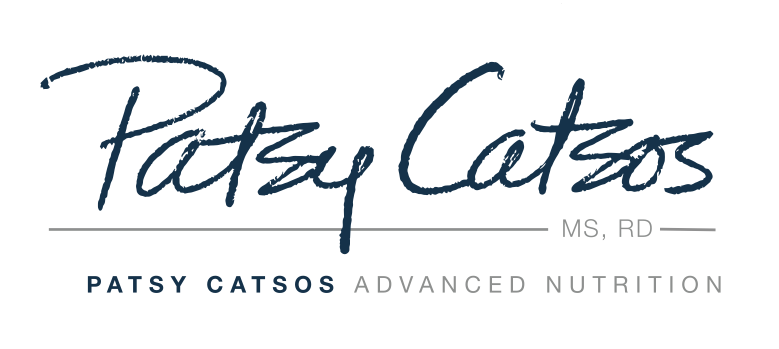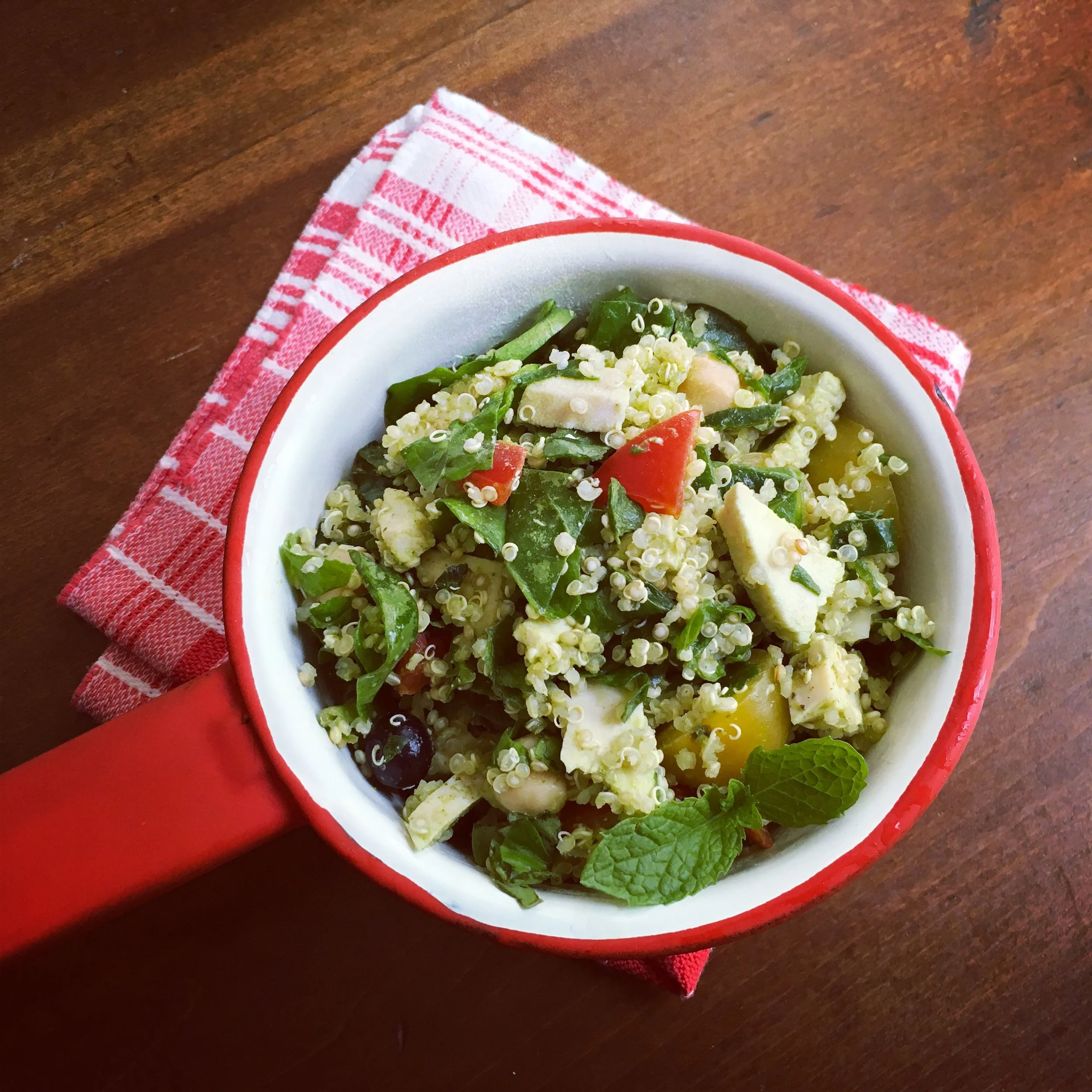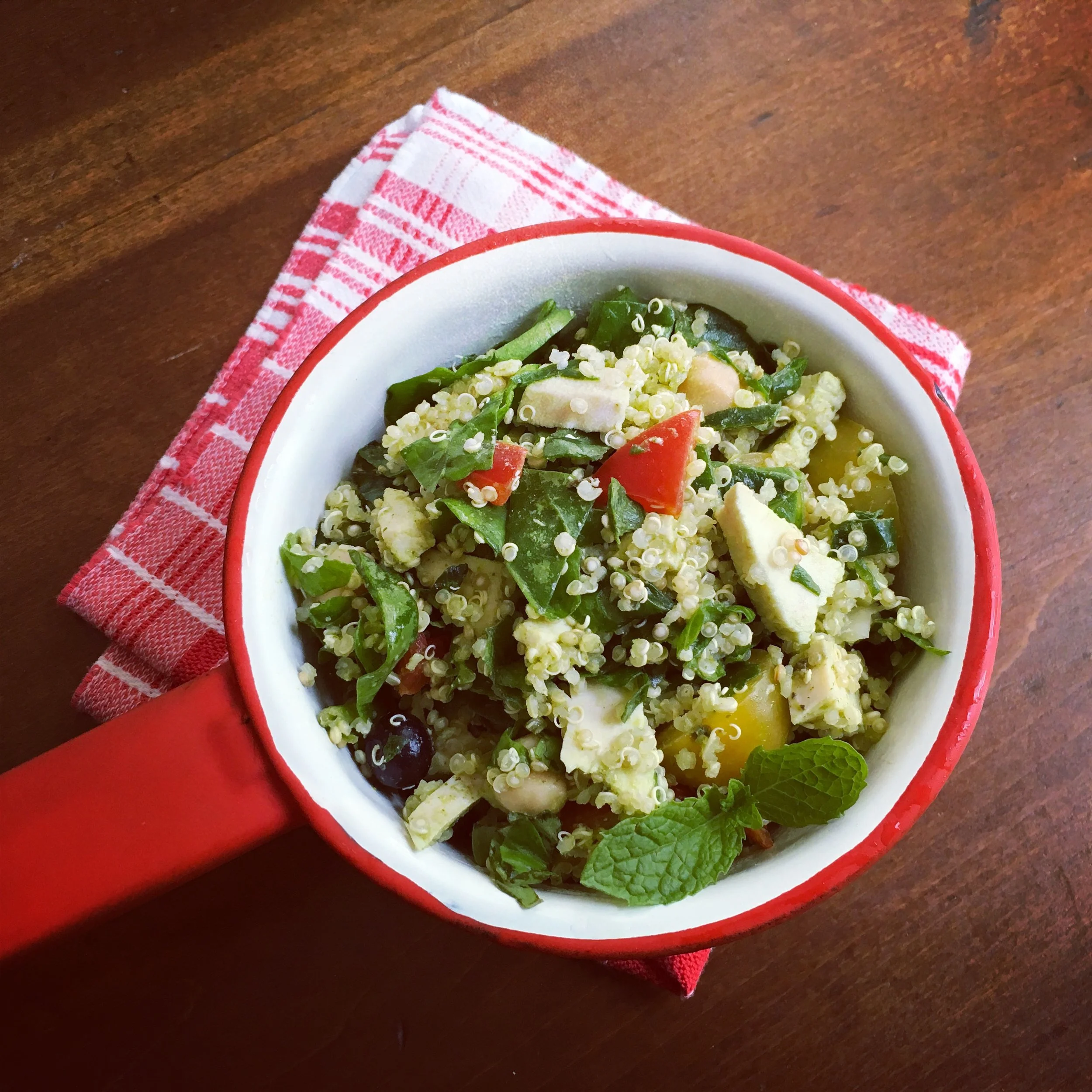Guest post by Jaqueline Hale
What is quinoa?
While many people mistakenly think that quinoa is a cereal grain, it is actually a relative of spinach or beets. Quinoa is a low-FODMAP food, originally grown in areas near the Andes mountains, which has becoming increasingly popular because of its many nutritional benefits. Quinoa is high in protein and it contains each type of the essential amino acids that your body cannot create on its own. A cup of quinoa provides over 5 grams of fiber; it is also a good source of minerals, including iron, magnesium, calcium, and potassium. These benefits are made even more attractive by how easy it is to make quinoa, which can be cooked on the stovetop the same way you make rice. You can cook quinoa in broth or stock instead of water to add extra flavor.
Quinoa is versatile! We enjoy eating it cold, as in the summery salad recipe we are sharing with you today. It can also be used in a variety of other ways. For a tasty breakfast, try cooking it the night before. Reheat it in the morning with some lactose-free milk, drizzle it with 100% pure maple syrup, and eat it with berries in the morning! Serve it warm in a grain bowl, or as a pilaf, tossed with cooked vegetables and herbs.
A fun fact about quinoa is that the little “strings” or tails that appear and seem to start falling off once the quinoa is fully cooked are actually the “embryos” of the seeds. The embryo of a seed is the part that would turn into leaves stem and root if the seed were planted. Quinoa seeds are naturally coated with a substance known as saponin, which acts as a repellant for insects as it grows. Quinoa seeds should be rinsed before cooking to wash off the saponin, else a soap-like foam will be produced during cooking.
When the little white "tails", or embryos, appear and begin to separate from the seeds during cooking, the quinoa is done.
CHICKEN-QUINOA SALAD
A perfect recipe for a warm summer evening with friends, this chicken-quinoa salad offers a variety of veggies and fruit along with good sources of protein. This recipe is IBS-friendly because it uses quinoa, which is low-FODMAP, as a base. You will have time to prepare the dressing while the quinoa is cooking.
INGREDIENTS:
Chicken-Quinoa Salad makes a great warm weather main dish! Bring it on your next picnic.
1 ½ cups uncooked quinoa
1 ¼ cups water
¼ teaspoon salt
1/3 cup fresh blueberries
½ cup thinly sliced scallion greens
1 medium red bell pepper, seeded, chopped
¼ cup chopped fresh basil
4 cups chopped baby spinach (6 ounces)
1 ½ cups cherry tomatoes, halved (½ pound)
1 cup sliced cucumber
1 pound boneless, skinless chicken breast, chopped
15.5 ounce can chickpeas, drained, rinsed
½ cup crumbled feta cheese
¼ cup raisins
½ cup fresh lemon juice
6 tablespoons olive oil
2 tablespoons garlic-infused oil
½ cup packed mint leaves
1 teaspoon salt
1 teaspoon ground mustard
1 tablespoon sugar
PROCEDURE:
- Rinse the quinoa in a mesh sieve. In a 4-quart saucepan, bring the water to a boil on high heat. Add the quinoa along with the salt, cover the pan, reduce heat, and cook until small white "tails" separate from the quinoa. White quinoa cooks faster than red quinoa, so start testing for after about 10 minutes. Red quinoa may take up to 15 minutes to cook. Remove from the heat and drain. Cover the pot again and allow the quinoa to rest for 5-10 minutes to absorb any remaining liquid.
- In a large bowl, briefly cool the quinoa. Then add blueberries, scallion greens, bell pepper, basil, spinach, tomatoes, cucumber, chicken, chickpeas, cheese and raisins. Stir to combine.
- In the bowl of a food processor or blender, combine lemon juice, olive oil, garlic-infused oil, mint leaves, salt, mustard, and sugar. Process until smooth. If desired, pour on top of the salad and toss to combine, or serve separately.
- Serves: 8 as a main dish salad (2 cups per serving)
Variations: Use strawberries instead of blueberries. Brown rice or gluten-free pasta can be used instead of quinoa. For a vegetarian version, tofu or tempeh could be used instead of chicken. Other vegetables such as chopped green pepper or kale could be added.
For a printable PDF version of this recipe, click here.
Recipe provided courtesy of www.ibsfree.netand GI Nutrition Inc.
Source: National Nutrient Database for Standard Reference Legacy Release April, 2018. Seen at: https://ndb.nal.usda.gov/ndb/July, 2018.
This page may contain affiliate links. We are a participant in the Amazon Services LLC Associates Program, an affiliate advertising program designed to provide a means for us to earn fees by linking to Amazon.com and affiliated sites.



